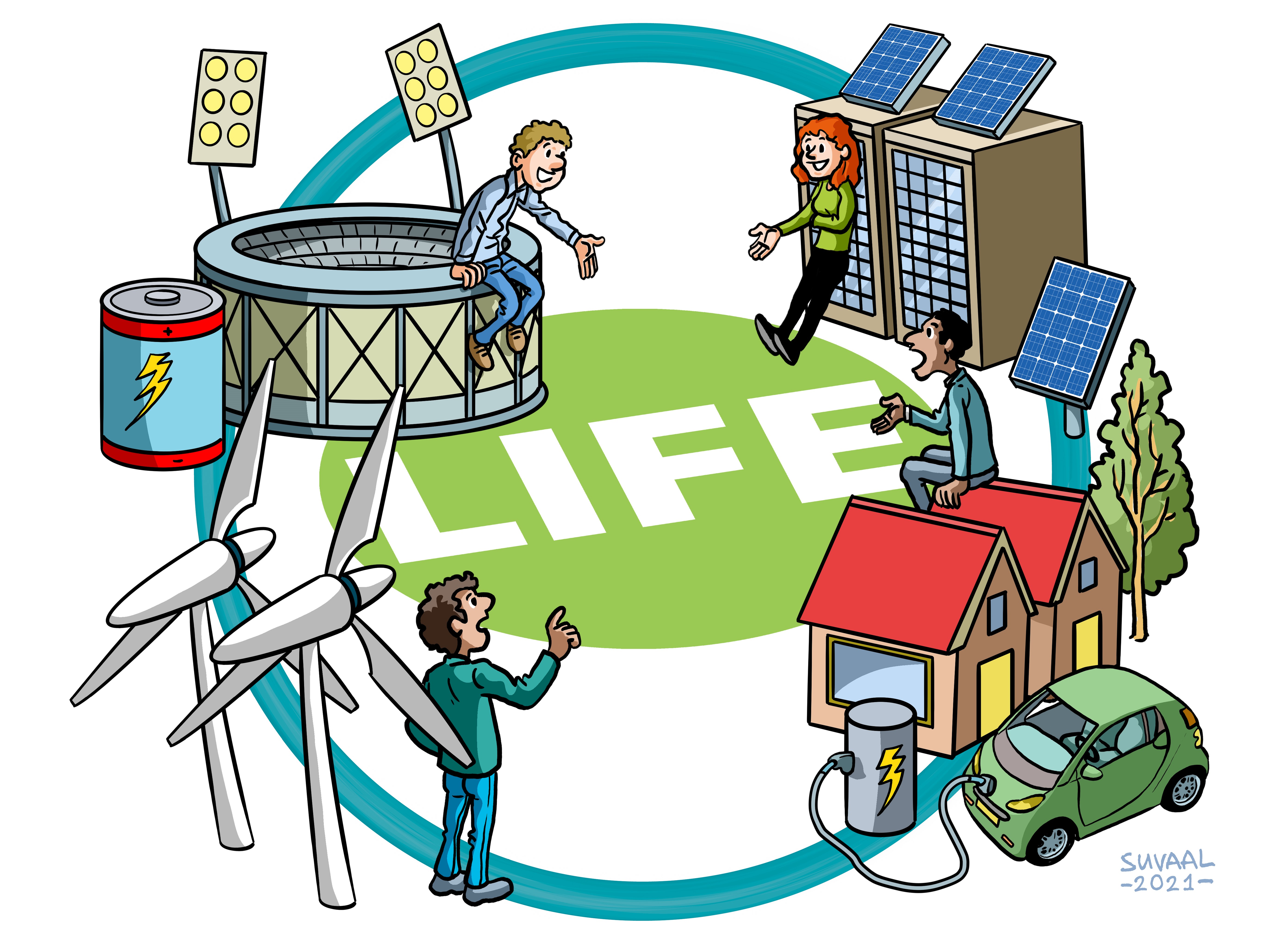LIFE: Local Inclusive Future Energy City Platform
Research Themes: Energy, Software technology & intelligent systems, Social impact


A TRL is a measure to indicate the matureness of a developing technology. When an innovative idea is discovered it is often not directly suitable for application. Usually such novel idea is subjected to further experimentation, testing and prototyping before it can be implemented. The image below shows how to read TRL’s to categorise the innovative ideas.
Summary of the project
With the rise of more solar panels, electric vehicles or even more houses or energy intensive commercial buildings – like the Johan Cruijff ArenA - there is an increasing stress on our electricity network, especially as locally demand and supply are not simultaneous. These situations can be resolved by increasing the capacity of the network – which is very costly and time consuming – or can be met by exploring smart energy management solutions. At the Amsterdam ZO area there are premises that have events during which they use a lot of energy – during a football match or music concert. Next to the ArenAPoort there are residential areas facing severe energy poverty (houses that can’t afford renewable energy solutions or afford energy usage at all). Against the backdrop of further urbanisation in the Amsterdam ZO-region, designing and operating urban energy systems in an inclusive fashion – simultaneously battling technical and social challenges – is a major challenge of the energy transition. The researchers aim to develop a scalable energy exchange platform to resolve both grid challenges and foster the participation of local residents into energy challenges. Through the platform they want to engage both large customers and residential energy users. By setting up an exchange where data, energy, and other assets such as football tickets and JC ArenA battery capacity can be traded the researchers want to create a setup that is inclusive and facilitates sustainable urban development. The insight into how the exchange and other energy services will work will be simulated by setting up a digital twin. In this digital representation of the area relevant buildings and their energy behaviour will be simulated. These simulations allow local stakeholders to see and learn what data or assets they can trade and when is the best moment for doing so aiming to decrease the peak utilisation of the local grid.
What's next?
When the math core of the digital twin is active and people from the companies and neighborhoods can submit their data to it the next step is to start writing applications for it – open source – enabling a participatory urban energy system. This concept will be scaled up technically with heat network extensions and geographically targeting other areas such as Rotterdam Schiebroek.
Contribution to the Energy transition?
With the development of a smart energy exchange platform the researchers aim to contribute to battling energy poverty and increase awareness of what the energy transition entails for the local stakeholders. The participation process allows the planning and development of grid-friendly and community inclusive energy innovations.
dr. ir. Arjen van der Meer
prof. dr. Peter Palensky
prof. dr. Tamas Keviczky
dr. Abhigyan Singh
Faculties involved
- EEMCS
- IDE
- 3ME
Additional information
- ams-institute.org/urban-challenges/urban-energy/local-inclusive-future-energy-life-city-platform
- johancruijffarena.nl/nieuws/duurzaam/amsterdam-zuidoost-testlocatie-voor-slim-lokaal-stroomnetwerk
- openresearch.amsterdam/nl/page/71786/lab-1-lokale-slimme-energiesystemen
- amsterdamsmartcity.com/updates/project/local-inclusive-future-energy-life-city-platform
